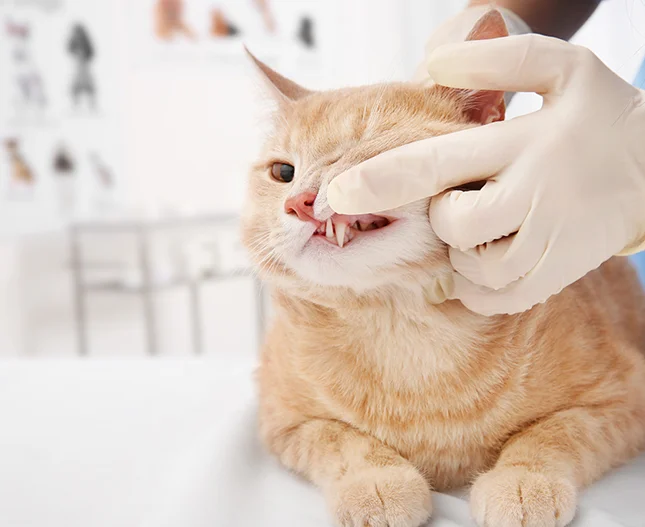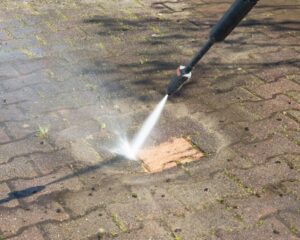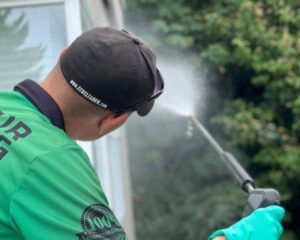
Introduction
As pet owners, we all want the best for our furry friends, and that includes their oral health. Just like humans, cats can experience dental issues that can impact their overall well-being. At Veterinary Dental Care, we understand the significance of Cat Dental Care and are passionate about providing top-notch dental services for our feline companions. In this article, we will explore the importance of dental care, common dental problems in cats, and the treatments and procedures available to ensure your cat’s oral health.
The Significance of Cat Dental Care
Why is Cat Dental Care Important?
Dental care is crucial for several reasons. Firstly, it helps maintain your cat’s oral hygiene, which is essential for their overall health and quality of life. Studies have shown that animals that receive regular oral exams and care tend to live longer than those that do not. Additionally, good oral health can prevent a range of dental problems and discomfort for your cat, ensuring they can eat, groom, and play without pain or difficulty.
The Role of Regular Dental Examinations
Unlike humans, cats cannot communicate when they are experiencing dental issues. Regular dental examinations are essential to detect any signs of pain or discomfort that your cat may not be able to express to you. During these examinations, a dental professional will thoroughly examine your cat’s mouth, looking for any abnormalities, plaque build-up, or signs of dental disease. Early detection of dental problems can prevent them from progressing into more severe conditions and can save your cat from unnecessary pain and discomfort.
Common Dental Problems in Cats
Cats can develop various dental problems that require professional attention. Here are some of the most common dental issues seen in feline patients:
1. Dental Fractures
Just like humans, cats can experience dental fractures or broken teeth. Considering all the things that cats chew on, it’s not surprising that their teeth can easily break. Dental fractures can cause pain, difficulty eating, and potential infections if left untreated. If you notice any signs of a broken tooth in your cat, such as drooling, pawing at the mouth, or decreased appetite, it’s important to seek veterinary care promptly.
2. Feline Stomatitis and Tooth Resorption
Stomatitis and tooth resorption are two dental conditions that commonly affect cats. Stomatitis refers to the inflammation of the oral tissues, including the gums, tongue, and throat. It can cause severe pain and discomfort, leading to difficulty eating and grooming. Tooth resorption, on the other hand, is the gradual destruction of a tooth, starting from the inside and progressing outward. Both conditions require professional dental care to alleviate pain and prevent further complications.
3. Oral Masses and Tumors
Just like humans, cats can develop oral tumors, which are abnormal accumulations of cells in the mouth. These tumors can be benign or malignant and can affect various parts of the oral cavity, including the gums, tongue, and jaw. Early detection and treatment are crucial to address oral masses and prevent them from spreading or causing further damage.
4. Periodontal Disease
Periodontal disease is a prevalent dental condition in cats. It occurs when plaque and tartar build-up on the teeth, leading to inflammation and infection of the gums. If left untreated, periodontal disease can result in tooth loss, pain, and potential systemic health issues. Regular dental cleanings and proper oral hygiene at home can help prevent and manage periodontal disease in cats.
Treatments and Procedures for Cat Dental Problems
At Veterinary Dental Care, our team specializes in the care of oral health for cats. We offer a range of treatments and procedures to address various dental problems. Here are some of the common procedures we perform:
1. Dental Extractions
In cases where a tooth is extensively damaged or diseased, extraction may be the best course of action. Dental extractions can alleviate pain, prevent the spread of infection, and improve your cat’s overall oral health. Our dental professionals use advanced techniques and anesthesia to ensure a safe and comfortable procedure for your cat.
2. Root Canal Therapy
In certain situations, a tooth that would typically require extraction can be saved through root canal therapy. This procedure involves removing the infected pulp from the tooth and filling it with a biocompatible material. Root canal therapy can preserve the tooth’s structure and function while eliminating pain and infection.
3. Oral Tumor Removal
If your cat has been diagnosed with an oral tumor, our team can perform surgical removal to eliminate the abnormal cells. The extent of the surgery will depend on the location and type of tumor. Our experienced professionals prioritize your cat’s comfort and safety, ensuring the best possible outcome.
4. Routine Dental Cleanings
Regular dental cleanings are essential for maintaining your cat’s oral health. During these cleanings, our dental professionals will remove plaque and tartar build-up, polish the teeth, and perform a thorough examination of the mouth. These cleanings are typically performed under anesthesia to ensure a stress-free experience for your cat.
Frequently Asked Questions
Why is anesthesia necessary for cat dental procedures?
Anesthesia is primarily used during cat dental procedures for pain control and to ensure your cat’s safety. Dental professionals need to probe underneath your cat’s gum line to examine the health of the gums and teeth. Without anesthesia, your cat’s movements or jerks could lead to potential injuries during the procedure. Anesthesia allows for a thorough examination and treatment of oral conditions.
Can a tooth be saved instead of extracting it?
In some cases, a tooth that appears damaged or diseased can be saved through advanced dental care techniques such as root canal therapy. Extraction is not always the only option, and it’s essential to have a dental professional examine the tooth using an oral exam combined with intraoral imaging to determine the best course of action for your cat’s dental health.
Do cats show signs of oral pain?
Unfortunately, both cats and dogs can live with oral pain for an extended period without showing obvious signs. They may continue to eat normally and appear unaffected, even with a diseased tooth. Regular dental exams are crucial for early detection and intervention, ensuring your cat’s oral health and overall well-being.
Conclusion
Cat dental care is a vital aspect of your pet’s overall health and wellness. By prioritizing your cat’s oral hygiene and seeking professional dental care when needed, you can ensure that your feline companion enjoys a pain-free and healthy life. Veterinary Dental Care is dedicated to providing exceptional dental services for cats, working closely with both pet parents and referring veterinarians to achieve collaborative goals. Remember, a healthy mouth leads to a happy cat! Contact us at 843-964-7474.


















No Comments yet!